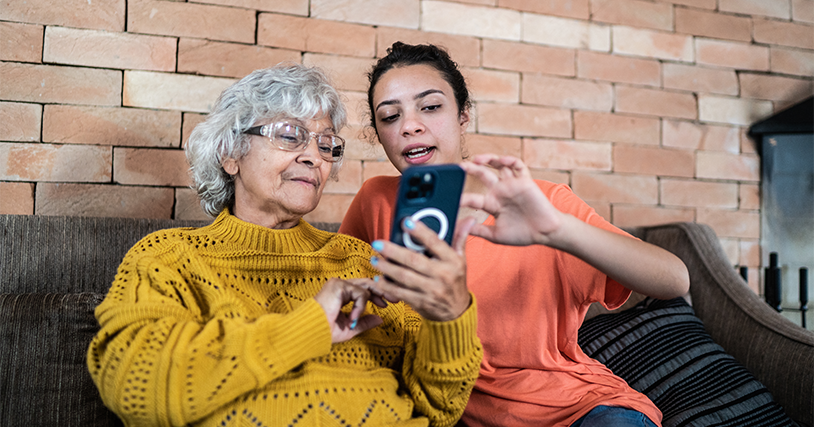When the Digital Gender Divide Closes, A World of Opportunity for Women Opens

At Hughes, we have long been focused on reducing the gap between those who have internet access and those who don’t. Some may not realize there is also a significant gender digital divide to address. As the research and public advocacy group World Wide Web Foundation found, men are 21% more likely to have access to the internet than women. In the world’s least developed countries, this likelihood rises to 52%. Yet we see firsthand how satellite opens up a world of possibilities for women around the world––enabling them to work, attend school, connect with family and friends, seek medical services and so much more. In recognition of International Women’s Day, we want to highlight a few examples how internet connectivity has made a tangible difference in the lives of women and girls around the world.
- Pricielle, a 15-year-old student, couldn’t get cell phone service at her home, located in the rural area of Raul Soares in Minas Gerais, Brazil. When Covid shut down her school, she walked a few miles each day just to find cell coverage so she could watch classes on her phone. After Hughesnet was installed at her home, she was able to participate in classes without missing any days due to a bad signal or inclement weather. Watch the video.
- Maira Gomes Godinho, better known as Cunhaporanga, is an internet celebrity who gained fame by introducing followers to life in the remote Tatuyo community, located in the Amazon rainforest on the banks of the Rio Negro. Her father, Chief Pinõ, brought Hughesnet to the village just two years ago. Excited by the new capabilities, Cunhaporanga began sharing videos of her peoples’ customs and routines––one of which showcased the practice of eating Mochivas larvae (a traditional food of indigenous culture). That post quickly went viral and she now has more than 6.5 million followers on social networks, bringing valuable awareness and understanding of this indigenous community. Watch the video.
- Josiane Luz’s family are cocoa producers in Iguaí, located in the interior of Bahia. Josiane decided to use the fine cocoa grown by her father to create her chocolate brand, known as Luzz Cacau. In Iguaí, her father cultivates, harvests and selects the fruits, sending beans to Josiane’s factory in São Paulo, where she makes the chocolate. Early on, as she was building the brand, Josiane often flew to Iguaí to participate in the grain harvest. But that made it difficult to monitor production in São Paulo because her father’s farm had poor phone service and lacked internet altogether. On rainy days, even the phone didn’t work. Once Hughesnet was installed at her father’s house, she was able to communicate with him regularly, as well as visit the farm and be able to monitor production processes in real-time. Watch the video.
- Teresa Albias lives at the foot of the Calbuco volcano, where her internet signal was often weak or unavailable depending on the weather. With Hughesnet at Teresa’s home, she can stay in contact with family, pay bills, order groceries and accomplish everyday tasks online. Watch the video.
- Hughes do Brasil developed a breast cancer program called Pink October Via Satellite. Through satellite internet, the team connected two breast cancer seminars with women from remote cities that have no connectivity. The purpose of the program is to teach women how to do breast self-exams, so they can monitor, identify and recognize any changes in their breasts. The program has also hosted live video sessions through Facebook and YouTube, in which women from around the country can connect with doctors and ask questions about breast health. Watch the video.
On International Women’s Day and every day, we celebrate the many ways women and girls seize opportunity when they are able to get and stay connected.